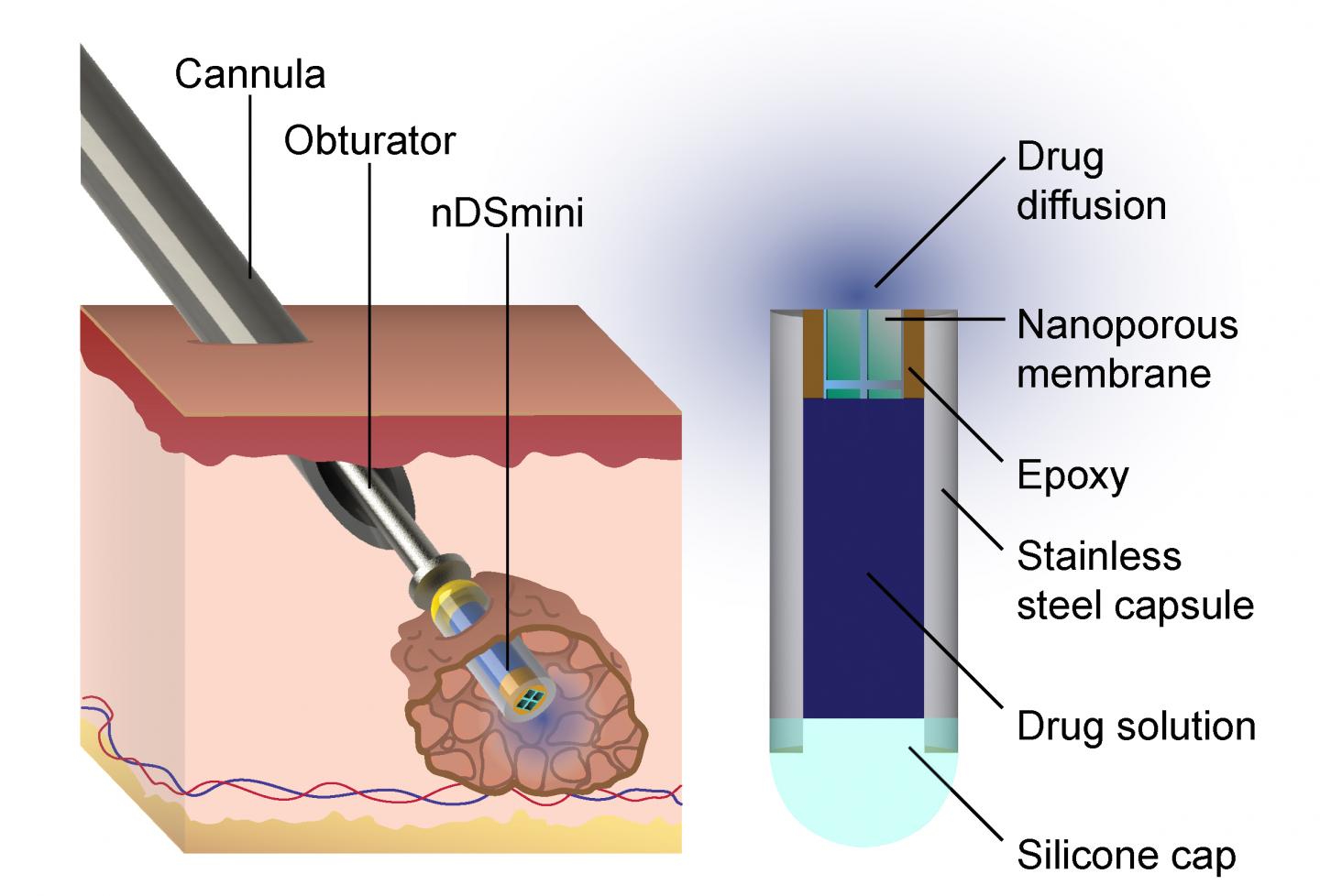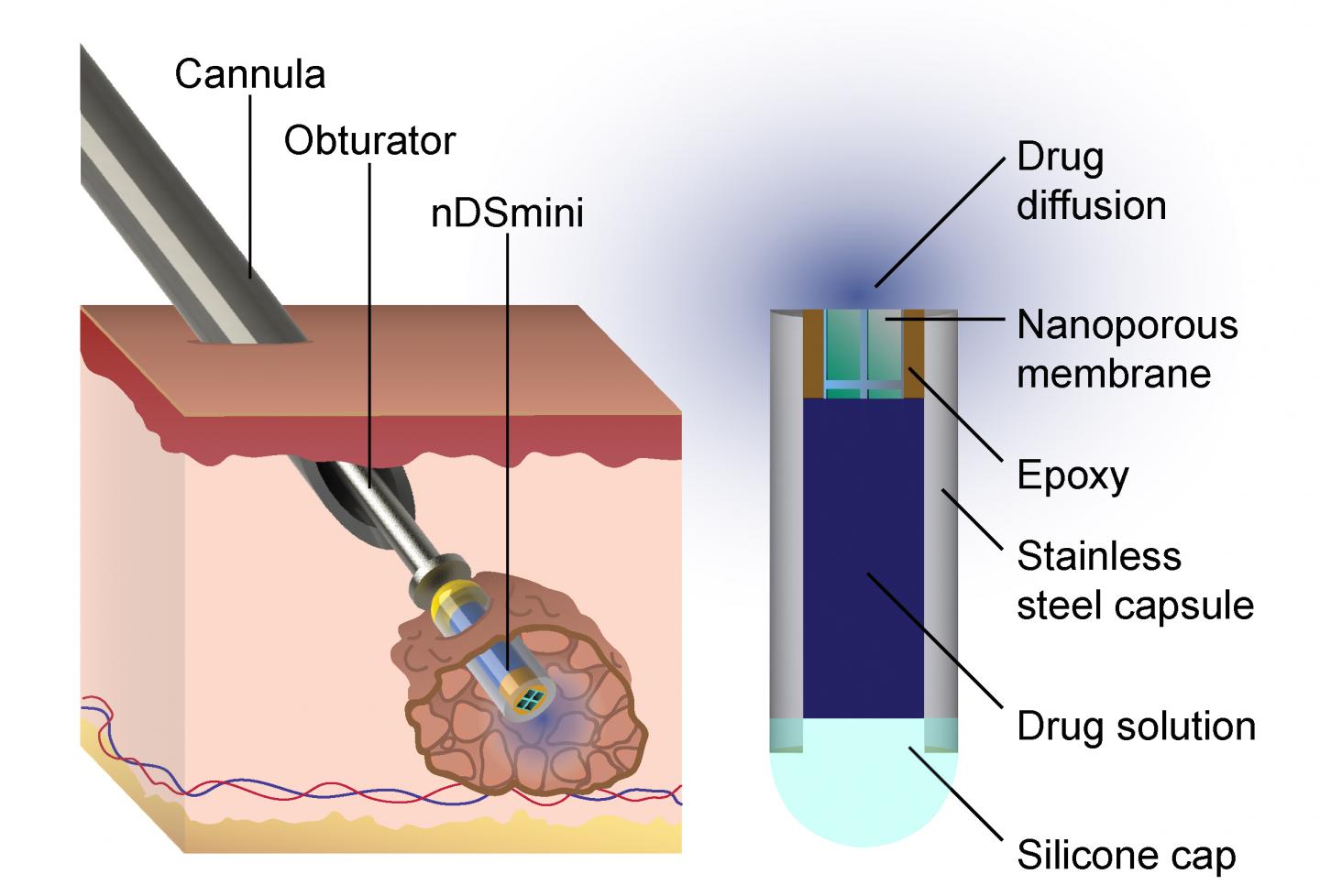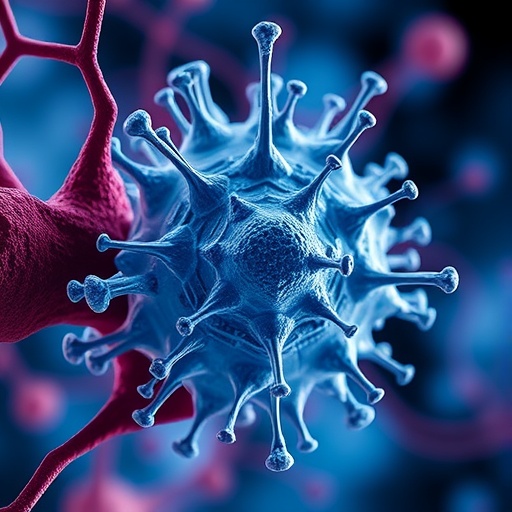
Credit: Lyle Hood/UTSA
A new study by Lyle Hood, assistant professor of mechanical engineering at The University of Texas at San Antonio (UTSA), describes a new device that could revolutionize the delivery of medicine to treat cancer as well as a host of other diseases and ailments. Hood developed the device in partnership with Alessandro Grattoni, chair of the Department of Nanomedicine at Houston Methodist Research Institute.
"The problem with most drug-delivery systems is that you have a specific minimum dosage of medicine that you need to take for it to be effective," Hood said. "There's also a limit to how much of the drug can be present in your system so that it doesn't make you sick."
As a result of these limitations, a person who needs frequent doses of a specific medicine is required to take a pill every day or visit a doctor for injections. Hood's creation negates the need for either of these approaches, because it's a tiny implantable drug delivery system.
"It's an implantable capsule, filled with medicinal fluid that uses about 5000 nanochannels to regulate the rate of release of the medicine," Hood said. "This way, we have the proper amount of drugs in a person's system to be effective, but not so much that they'll harm that person."
The capsule can deliver medicinal doses for several days or a few weeks. According to Hood, it can be used for any kind of ailment that needs a localized delivery over several days or a few weeks. This makes it especially tailored for treating cancer, while a larger version of the device, which was originally created by Grattoni, can treat diseases like HIV for up to a year.
"In HIV treatment, you can bombard the virus with drugs to the point that that person is no longer infectious and shows no symptoms," Hood said. "The danger is that if that person stops taking their drugs, the amount of medicine in his or her system drops below the effective dose and the virus is able to become resistant to the treatments."
The capsule, however, could provide a constant delivery of the HIV-battling drugs to prevent such an outcome. Hood noted it can also be used to deliver cortisone to damaged joints to avoid painful, frequent injections, and possibly even to pursue immunotherapy treatments for cancer patients.
"The idea behind immunotherapy is to deliver a cocktail of immune drugs to call attention to the cancer in a person's body, so the immune system will be inspired to get rid of the cancer itself," he said.
The current prototype of the device is permanent and injected under the skin, but Hood is working with Teja Guda, assistant professor of biomedical engineering, to collaborate on 3-D printing technology to make a new, fully biodegradable iteration of the device that could potentially be swallowed.
###
Media Contact
Joanna Carver
[email protected]
210-243-4557
@utsa
http://www.utsa.edu
############
Story Source: Materials provided by Scienmag





